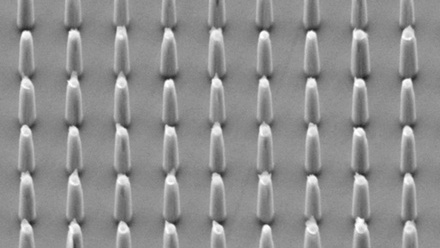Neural recording device blooms
A flower-shaped 3D microelectrode array could help achieve breakthroughs in the study of neurological diseases.

Conditions like Alzheimer’s, Huntington’s and Parkinson’s affect millions, but the high cost and complexity of clinical trials make it extremely difficult to develop treatments.
Neural spheroids and neural organoids are essential tools for understanding neural networks, modelling neurological diseases and therapeutics screening. They are especially useful as discovery tools for powerful drugs.
Neural spheroids are 3D clusters of neurons that replicate some of the key functions of brain tissue. Neural organoids are 3D cell culture models that contain multiple cell types and more closely mimic the brain.
Organoids are more complex and therefore more useful – but also more difficult to use. Previous tools have struggled to get accurate recordings without damaging the 3D neural models of even the simpler spheroids.
The ‘e-Flower’, created by a research team at EPFL, Switzerland, has been designed to overcome this problem.
The device comprises four flexible petals equipped with platinum electrodes, which curl around the spheroid when exposed to the liquid that supports the cell structure. This movement is driven by the swelling of a soft hydrogel, making the device easy to use and sufficiently gentle on the structure to use safely and accurately.
As so often with scientific breakthroughs, an unexpected discovery was crucial.
While working on soft implants for peripheral nerves, researcher Outman Akouissi realised that the hydrogels used cause his devices to curl unpredictably when exposed to water.
The accidental curling mechanism has been harnessed to wrap around neural spheroids.
The design reportedly allows the e-Flower to record neural activity from much more of the neural spheroids’ surfaces in real-time than previous devices. It is intended to be compatible with existing electrophysiological systems, and the research team hope it can offer a ‘plug-and-play’ solution.
Currently, the e-Flower is only suitable for use on neural spheroids, but the goal is to develop a version that can be applied to brain organoids, which more accurately model brain development and disorders.
If the technology can be successfully applied to organoids, it could enable for researchers to record electrical activity from all sides of the brain. This would lead to more comprehensive understanding and consequently new insights into brain injury recovery, neurodevelopment and neurological diseases.







